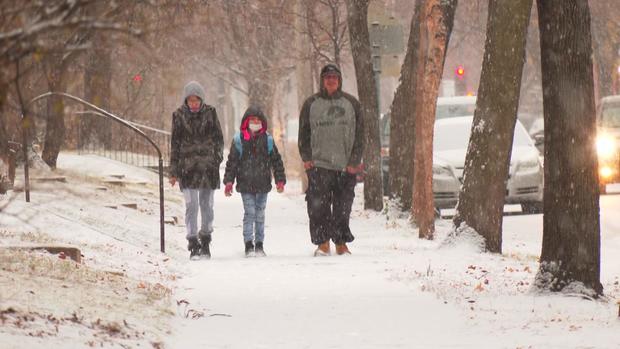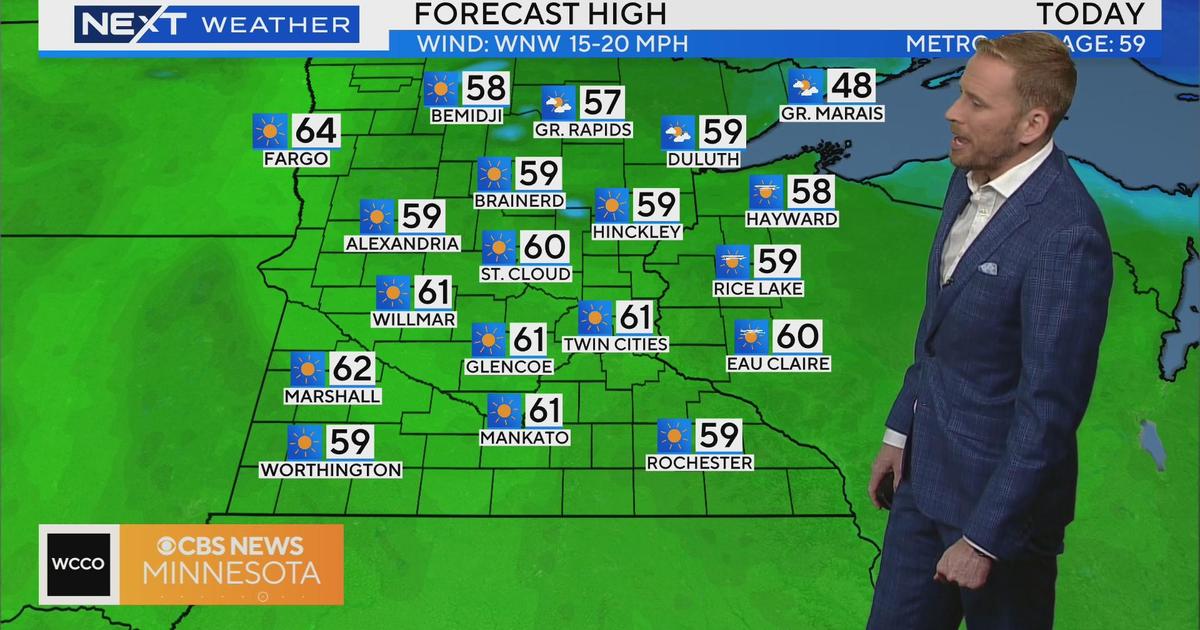What's the difference between a winter storm watch, warning and advisory?
MINNEAPOLIS – It's almost poetic that Winter Weather Awareness Week started with snow-covered commutes.
The National Weather Service put out alerts to help us prepare. But what's the difference between a winter storm watch, warning and advisory? And how is WCCO making sure you know that message quickly?
It was a wicked wake-up call Monday morning. The first measurable snowfall of the season was also measured by its dangerous timing, with the Minnesota State Patrol reporting nearly 700 crashes and spinouts that day.
Steady snow at a time when thousands hit the road led to a specific alert from the National Weather Service: Winter Weather Advisory.
Between watches, warnings, and advisories, which alert happens first? WCCO spoke with Caleb Grunzke, a meteorologist with the NWS Twin Cities.
"The watches come first," said Caleb Grunzke said.
Weather events like what happened on Monday might carry a Winter Storm Watch in the days prior. It means in the next 48 hours, dangerous winter weather is possible, as are travel issues.
When the system gets closer, about a day out, it can change to a Winter Storm Warning or Winter Weather Advisory.
"The differences between a Winter Weather Advisory and a Winter Storm Warning is just basically the amount of snow or sleet expected," Grunzke said.
Winter storm warnings have the highest concern. It means dangerous weather with at least a half-foot of snow incoming, often in a short span of time. It could be 6 inches of snow within 12 hours or 8 inches of snow within 24 hours, and roads will be especially concerning.
"Probably don't travel or do anything outside if you can help it because conditions are gonna be dangerous," Grunzke said.
A Winter Weather Advisory will have less precipitation than a warning, but travel will likely still be difficult.
What are some other key warnings people need to be aware of this winter?
"Windchill warning, definitely," he said.
Strong winds alongside bitter cold intensify come January. A Wind Chill Warning means dangerous cold and strong winds are happening.
Those same gusts could potentially cause blizzard warnings, which is when visibility drops under a quarter mile for several hours due to blowing snow.
Before any alert comes from the NWS, the NEXT Weather Team at WCCO is often putting out its own alerts.
"That's been kind of fun now when the National Weather Service issues advisories or watches or warnings, a lot of our viewers are like, 'Yeah, we know,'" said WCCO Chief Meteorologist Chris Shaffer.
WCCO's NEXT Weather Alert system promises that you'll know about impactful weather changes as soon as we know them.
"And then as it is happening, we're alerting you to what we already alerted you to," Shaffer said.
Those NEXT Weather Alerts will be shared on air, online, and at your fingertips through the WCCO Weather App.





